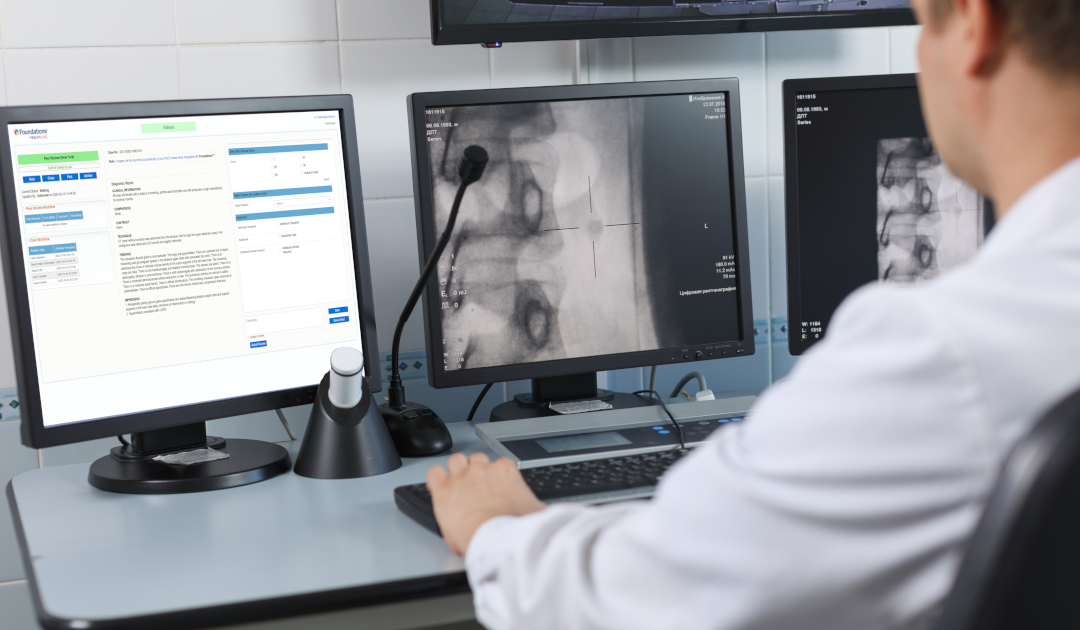Peer review in radiology is imperative to improving clinical quality. Assessing the accuracy of imaging diagnosis is a means by which interpretation is enhanced, elevating clinical quality. Despite this, some program administrators and participants still find peer review to be a chore. After all, tasks include finding exams & reports; anonymizing & assigning studies; sending, notifying, & re-engaging recipients; interpreting the scoring and providing feedback. This can cost thousands of dollars and hundreds of staff hours. In the case of one peer review program*, it required $5,000 and over 100 hours of non-clinical staff hours to maintain – per month! If not managed efficiently, a manually run peer review can be a cumbersome, arduous, and costly burden for all participating staff.
Fortunately, technological advances have made automated peer review programs a reality. Packaged as software, these peer review solutions lift the administrative, chore-like burden off the organization to deliver an intuitive, efficient experience that requires minimal-to-no administrative effort to maintain. Results lead to increased participation rates, lowered costs, and improved clinical quality. Here, we share three key advantages that automated peer review systems deliver.
Minimal-to-No Administrative Effort
Software that automatically administers the peer review process has several benefits. It can automatically find & assign studies, and it can be fine-tuned for unbiased reviewer/reviewee mappings based on specialty. Automated peer review can weigh for high-risk studies with assignments that are intelligent, improving the chances of identifying studies with diagnostic errors. As cited in the Journal of the American College of Radiology**, peer review processes or models based only on randomization, in comparison, are not as likely to perform at the same level. More robust systems will seamlessly integrate with existing image-viewing systems (e.g., PACS, VNA), eliminating even more administrative effort. Ultimately, staff that would have otherwise been assigned to managing a peer review program can focus on other critical tasks, leading to decreased costs and improved operational efficiencies for the organization.
Supports a Positive Peer Review Culture
An effective peer review program is one driven by a culture of support. One way to achieve this is by removing bias from the peer review process. (Bias is in reference to judgements made by the reviewer based on their existing knowledge of the reviewee.) An automated peer review system automatically removes the names of both the reviewer and reviewee – and allows for management follow-up after the review has been completed. A reviewer can perform with complete objectivity, leading to a positive response by the reviewee. The system becomes a tool for improving diagnostic results driven less by fear and more by support from their peers through their objective feedback. Thus, the automated system builds a supportive peer review culture with participants that find renewed value in the peer review process.
Improves Participation Rates
In addition to reducing the administrative burden, the right peer review software must also reduce the burden for the radiologist. It does this by delivering an intuitive, self-service user interface that makes the review process as painless as possible. Robust peer review software delivers an experience that staff want to engage with; e.g. it thoughtfully includes seemingly minor, but vital features such as auto-launching images in the native viewer. Coupled with a positive peer review culture, the process is a productive one, fueling motivated engagements with more studies, leading to increased participation rates. Most importantly, this is done without contributing to staff stress, or worse yet, burnout. An easy-to-use interface gives radiologists every reason to participate in a peer review program, improving clinical quality, and ultimately benefiting the patient.
The Future is Now – Peer Review Automation
With stress, burnout, and staffing shortages on the rise, automated technology is the key to addressing increasing market demands. Automated peer review software manages the entire administrative process, lifting the administrative burden because it requires minimal-to-zero effort by staff. It drives a positive peer review culture by automatically promoting an objective process ensuring reviewer & reviewee anonymity. Finally, it increases peer review participation rates by making the review experience engaging and valued.
* Based on a customer experience prior to implementing Foundations™ Peer Review.
** Random Versus Nonrandom Peer Review: A Case for More Meaningful Peer Review – https://www.jacr.org/article/S1546-1440(18)30399-5/fulltext
HealthLevel is the creator of Foundations™, a radiology business operations platform. By combining financial, clinical, and operational data, it uses analytics to paint a complete picture of a business’s operations. It engages every team member to confidently take actions that improve productivity and increase the bottom line. Learn more.
Want to Learn More? Contact Us.



Recent Comments